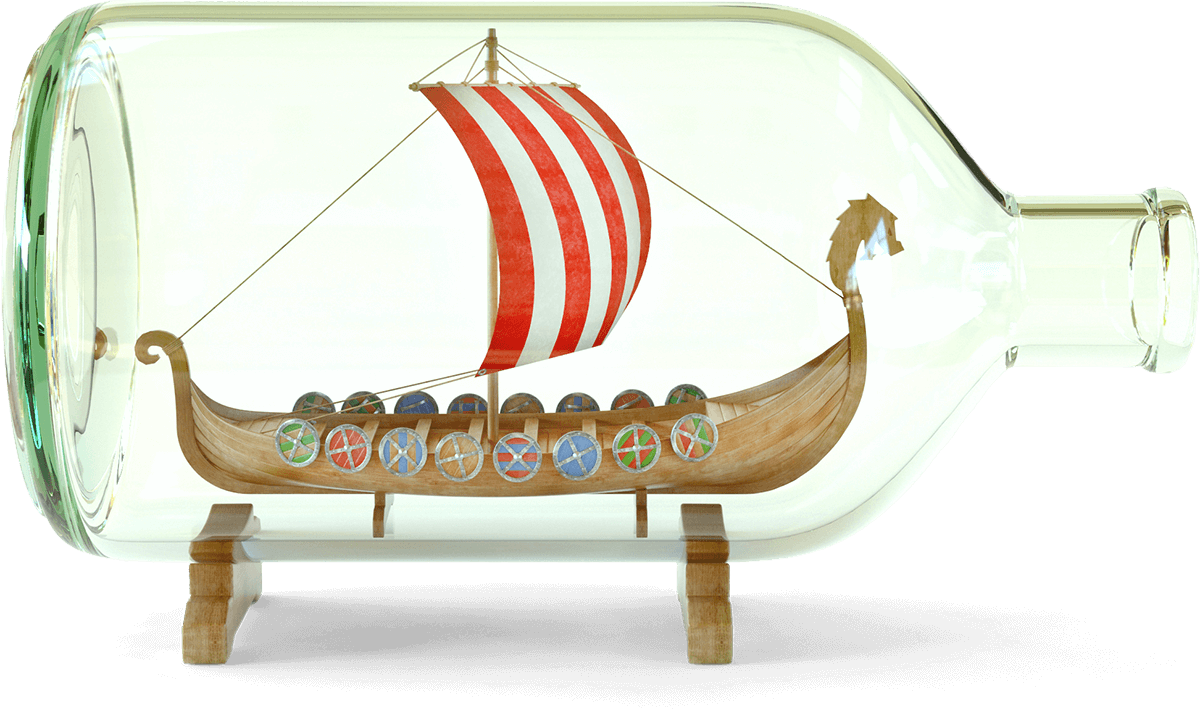Buzz Lightyear’s catchphrase from Toy Story evokes unwavering optimism and a keen desire to push boundaries. As optimists who believe that human ingenuity will improve lives, we salute Buzz’s style and ethos.
Unlike Buzz, we prefer to engage our brains thoroughly before springing into action. We look for companies that can provide compounding returns for years to come because they have, amongst other things, strong growth potential and the ability to repel competition. The second of these is known in our trade as a ‘moat’.
A good moat is often the deciding factor that gives us the confidence and patience to invest in a company over long periods and through volatile markets. Growth with a moat is more likely to be compounding growth and provide a smoother ride across economic cycles and markets to boot. The benefit of a good moat is not felt over quarters, but over years.
“Moats are lame”
“Moats are lame. They’re like nice in a sort of quaint, vestigial way. But if your only defense against invading armies is a moat, you will not last long. What matters is the pace of innovation.”
Elon Musk, Tesla earnings call, April 2018.
We have a great deal of sympathy for Elon’s view. Our portfolios hold plenty of innovative companies, some of which appear in previous Views covering the power of disruptive innovation, how to prepare for 10 billion people, our friends the robots and more.
We also agree that the term ‘moat’ has an image problem, bringing to mind a static medieval structure offering, at best, hope that the enemy gives up and moves on. In fact, company moats can be subtle, dynamic and innovative. They might be technological advantages, but there are other and often more effective ones. These include: high levels of customer loyalty and trust; corporate cultures and structures that enable accountability and good decision-making and engaged, level-headed management who know what they are about and won’t bet the ranch.
Seek and ye shall find
We look for companies with strong moats, so we are likely to find them — or think that we have. How can we avoid seeing moats where they don’t exist? Furthermore, if there is a moat, is it as robust as we think it is? There are countless examples of once-great ‘unassailable’ businesses, from the Nifty Fifty stocks of the 1970s to Nokia, lord of half of the global mobile phone market in 2007.
A first step is to be aware of our own psychological foibles, such as consistency bias. Having committed to a stock and declared to ourselves and others that it has a robust moat, it can be difficult to challenge that view. For this reason, we hold ‘Negspresso’ sessions, in which we invite external analysts to argue the case against stocks that we hold. Like a good espresso shot, these meetings can provide a welcome wake up. A more mind-bending variant of the Negspresso requires us to argue the case against our own portfolio holdings.
Negspressos are an extremely useful and rigorous way to challenge our own thinking, but there are other ways that we can gauge moat strength, including the following three rules of thumb.

The north wind made the Vikings
Has a company’s moat ever been tested? In short, has it been through the school of hard knocks?
One of our portfolio companies is Bunzl, which supplies low-value but high-importance products such as cleaning supplies, coffee cups, packaging and safety equipment. Now, you might have expected Amazon to have eaten Bunzl’s lunch years ago, but Bunzl has found ways to out-Amazon Amazon. For example, Bunzl is able to deliver 700 different items to Costa Coffee in one box at a pre-agreed time1, something that Amazon cannot do. This means that Costa can minimise its storage space and sourcing, and focus instead on its main revenue-generating activities.
Secondly, Bunzl regularly acquires businesses – a running total of 210 since 2004.2 These are often run by family owners who want to realise value but also stay involved in their businesses. Bunzl’s decentralised model means they can do this and grow within the Bunzl group.
Together, these features enable Bunzl to offer something unusual: a bespoke service, with motivated managers and local market knowledge – but at huge scale. For investors, this has resulted in a 10% compound annual growth rate since 2004.3

Are you sharing nicely?
Companies that take their customers for granted or extract maximum value for their shareholders may find themselves short of friends when the going gets tough. Sharing the love is simply good business sense, as Costco well knows. It shares its economies of scale with customers, saving them an estimated $5 for each $1 it pays to shareholders.4 The payoff is a fantastically loyal customer base that has made Costco’s low-margin business a long-term success.
We see the same ethos in the way Amphenol, one of our core long-term holdings, engages with its customers. Although its electrical products are not always particularly sophisticated or expensive, Amphenol has loyal customers, thanks to its ability to anticipate customer needs and scale production accordingly to deliver on time. After delivering Q1 2024 results, R. Adam Norwitt, CEO of Amphenol, noted:
“Our goal is to deliver the maximum amount of value to our customers at the lowest price that they can get. And if we can deliver enough value to our customers, then there will be some of that value left over for us.”
Amphenol, incidentally, is very much a graduate of Hard Knocks University, having lived with local competition in China for 30 years.

You’re going to need a bigger wallet
A third measure of moat strength is the amount of investment needed to launch a successful attack on an incumbent. This may be in terms of tangible capital or skills. Semiconductor manufacturing, for example, needs both in spades (see, for example, Chris Miller’s excellent Chip War: The Fight for the World’s Most Critical Technology).
The ‘invested moat’ could also be intangible. Coca Cola, for example, has invested an average of $4 billion per year in advertising over the past 10 years5, and with lasting effect. The ads and brand values that we imbibe when young stay with us for decades.
Mastercard, one of our portfolio companies, combines all three elements. Worldwide, it has 2.94 billion active cards6, while its expertise in cybersecurity is such that 40% of Mastercard’s revenue now comes from providing services such as cyber security to banks.7 It is also one of the world’s most trusted and recognised brands: few companies have the confidence to replace their name with a simple symbol!
Despite this, Mastercard is still a young company in terms of its growth potential. The company estimates the potential global payments market to be $255 trillion, of which only $37 trillion is consumer purchases that Mastercard is associated with.8
Opportunity knocks
At the time of writing in August 2024, markets have entered a volatile phase that could last for months. For us, this is a period of opportunity because a number of good-quality companies that we have researched and admired for some time are now trading at more attractive prices.
Any investment decisions we make will be based on painstaking research (some of it months in the making) into each company’s ability to provide solid compounding growth for years to come. As always, the engine for this growth will be a blend of innovation, good management, good culture and putting clients first.
In our research, the devil’s in the detail. But when all is said and done, our business has just one objective – to enable our clients’ portfolios to grow more than inflation. Rather than aiming to outperform markets or competitors, we focus on beating inflation, the real enemy of our clients’ spending power. To our mind, the best way to do this is to find companies we can stick with, through thick and thin.
- Meridiem meeting with Bunzl CEO, 6th September 2021 ↩︎
- Bunzl Business Case 2024. https://www.bunzl.com/media/zgcjpqgc/business-case-2024.pdf ↩︎
- Bunzl Overview, 2024. Adjusted earnings per share compound annual growth rate. https://www.bunzl.com/media/e5vewnmk/bunzl-factsheet-2024.pdf ↩︎
- Nick Sleep: The Master of Compounders https://www.linkedin.com/pulse/nick-sleep-master-compounders-stock-unlock-rnlwc ↩︎
- Statista, https://www.statista.com/statistics/286526/coca-cola-advertising-spending-worldwide/ ↩︎
- CapitalOne Shopping, 30 June 2024, https://capitaloneshopping.com/research/credit-card-market-share-statistics/ ↩︎
- Meridiem visit to Mastercard operations centre, May 2024 ↩︎
- Mastercard Investor Day Information Pack, 2021 ↩︎
The above review has been issued by Meridiem Investment Management Ltd, which is authorised and regulated by the Financial Conduct Authority. This is not a financial promotion, this document is for information only. The opinions expressed above are solely those of Meridiem Investment Management Ltd and do not constitute an offer or solicitation to invest. The value of investments and the income from them may fluctuate and are not guaranteed, and investors may not get back the whole amount they have invested.
 Catriona Hoare
Catriona Hoare 